Lunar Views at SFU Starry Nights

After a great experience at my first SFU Starry Nights a couple of months ago, I was looking forward to being back at this event, which runs every clear Friday night throughout the year. I missed several events due to conflicts or cancellations due to weather, but finally, the stars aligned (apologies…), and after a quick climbing session at the North Vancouver Hive, I drove to SFU early and set up while the sun was just starting to set, on a beautiful warm summer evening.
It was “first light” for a used telescope I recently purchased off the astronomy classifieds, the Astro-Tech 72mm EDII, that I named “Timbit”, a tiny little scope that I can fit comfortably in my camera bag. I bought it with the hopes of using it for quick outreach events at the Lonsdale Quay when I didn’t feel like dragging out the 100+ pounds that is the AZ-EQ6 mount and Takurrito, my 4” Takahashi FC-100DZ, plus its Pelican case and accessories.
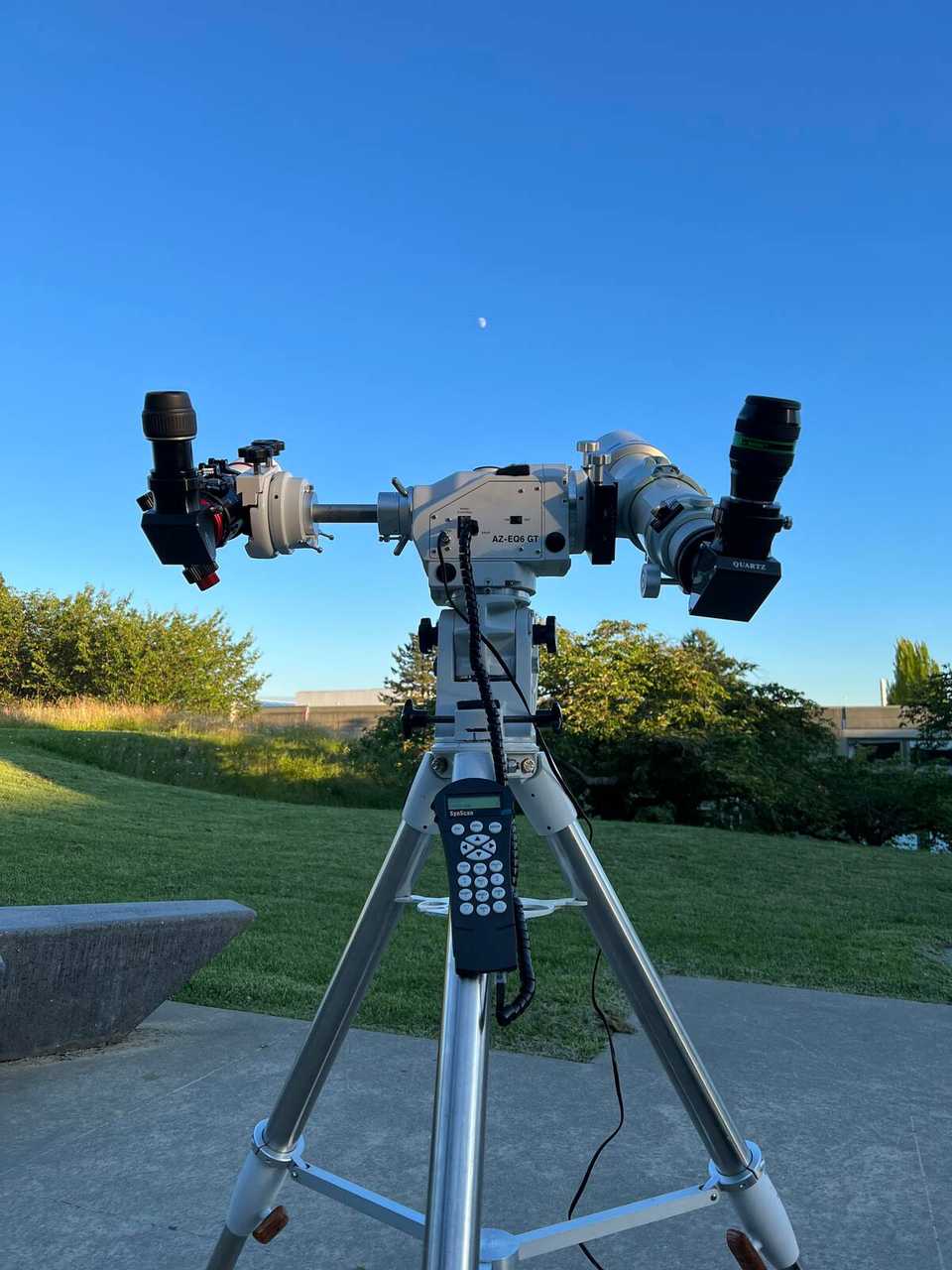
It was also my first time using my AZ-EQ6 mount in dual-scope mode, and although I was initially worried about aligning the two scopes (especially since the secondary saddle has only altitude adjustments, with no way to adjust azimuth) after I mounted the scopes and slewed to the waxing gibbous moon, I realized that the azimuth alignment was more or less spot on.
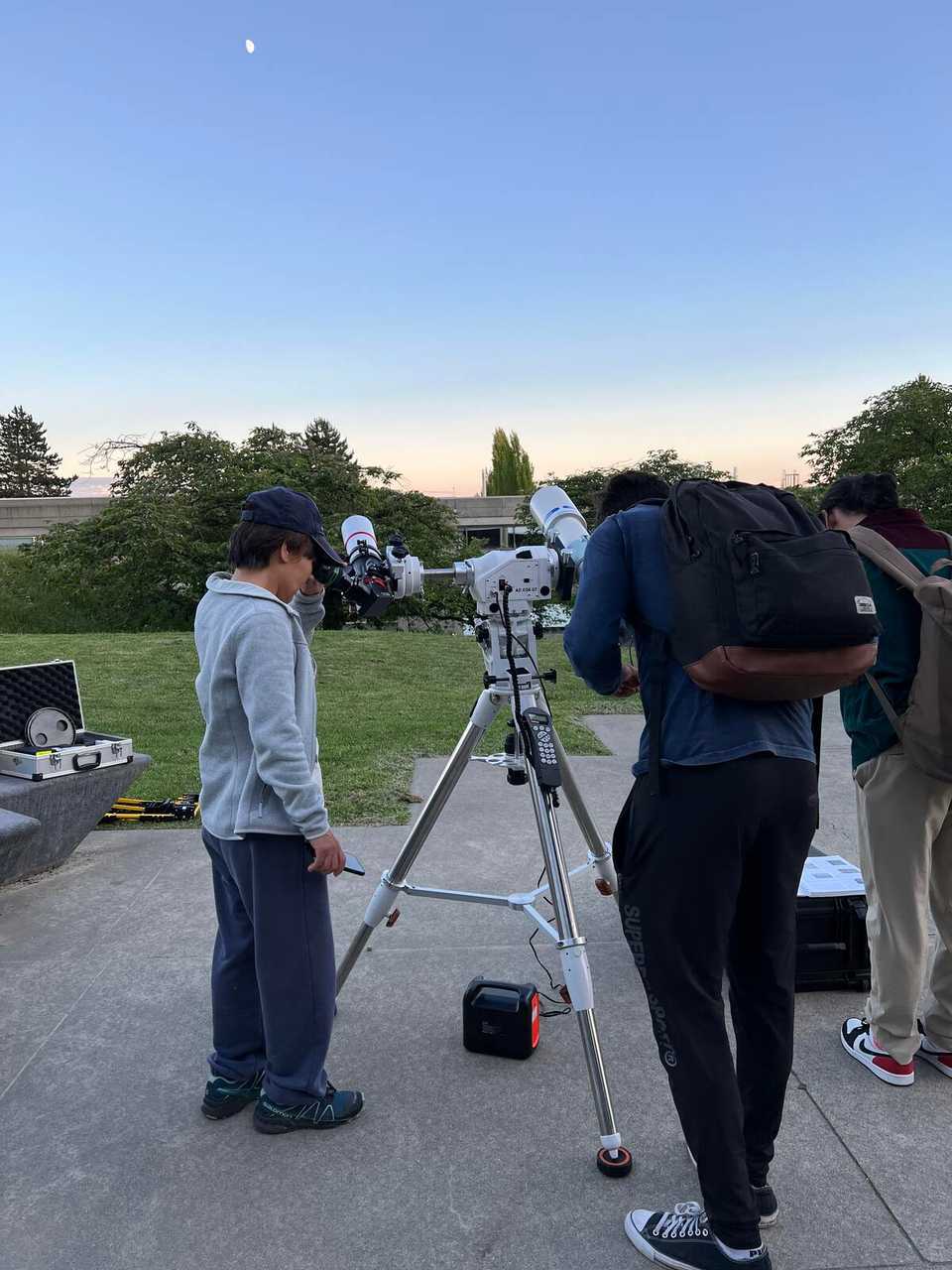
I planned to have Timbit, riding on the left saddle, to be on full-disk moon duty, with a comfortable 42x power, and Takurrito, riding on the main right saddle, to be on high-power crater duty, at 200x+ power to draw out as much detail as possible, framing Copernicus, Plato, and some of the impressive lunar mountain ranges. This combo ended up working wonderfully, as I’ll explain later.
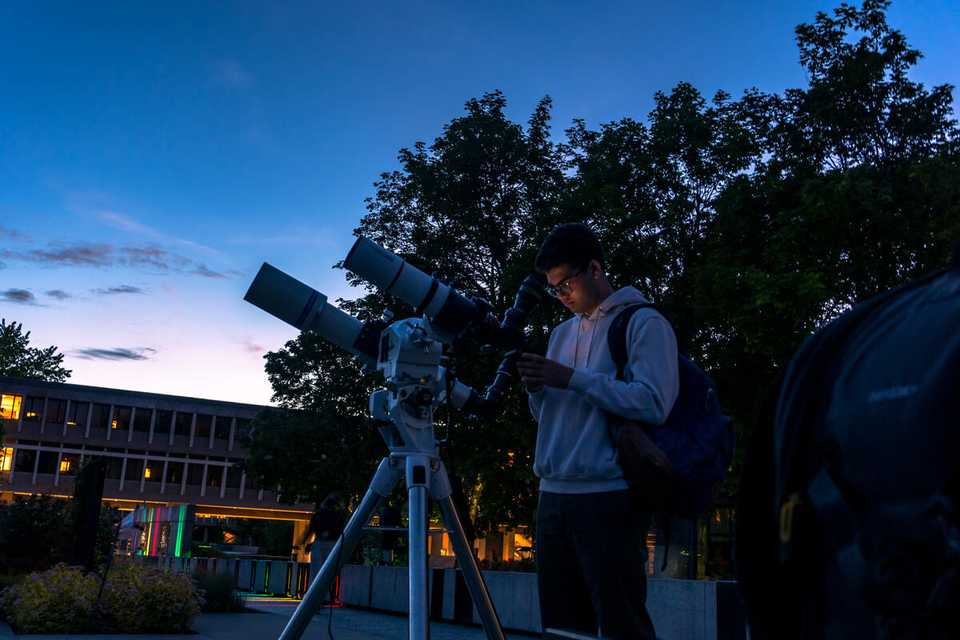
As I finished setting up, at a little past 8 pm, some curious SFU students started to come by, asking what I was looking at, and I told them that they were welcome to view the moon through my telescopes. I encouraged people to start at Timbit, to view the entire moon in all its glory, before moving on to Takurrito, which revealed masses of detail, including in the 93km-wide Copernicus, with the ridged texture of the perimeter and the central mountains looking three-dimensional. In Plato, the central craterlet was visible, as were possible hints of other craterlets.
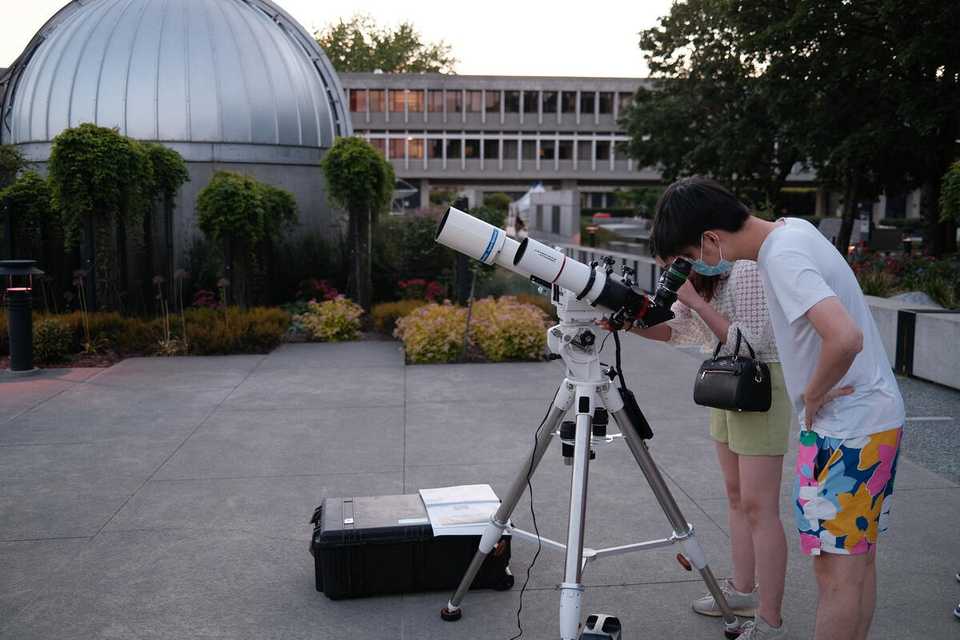
Soon, Matthew from the Trottier observatory came by to say hello and asked me if I wanted to view through the 27” PlaneWave Instruments telescope. How could I say no? Matthew told me that the scope was pointed at the moon (the only visible target as the sun still hadn’t set). I eagerly followed him into the observatory and was struck by the impressive telescope, and noted the two Televue NP101 telescopes pointed towards each other, attached to the side of the mount where the eyepiece or camera normally attaches. These two refractors serve to make this telescope accessible, as the eyepiece would normally require a large ladder to reach.

I sat on the chair, with the eyepiece (the Televue 31mm Nagler) in an ergonomic position and viewed the moon at high magnification. It appeared somewhat soft and out of focus - I tried to use the focuser but found it rather stiff and difficult to get the image to sharpen. The outer edge of the field of view also was a dark orange, almost like there was some vignetting. The coolest part was when Matthew handed me a keyboard and told me to use the arrows to navigate. Having this behemoth move in response to the keyboard presses and being able to fly around the moon was very cool.
Matthew told me that the telescope was scheduled for cleaning soon, so I look forward to coming back. I’d love to view the planets in particular through it. I also wonder how much the views would improve if the 2 NP101s were removed and the eyepiece placed straight in the original visual back of this telescope. Each NP101 introduces 4 glass surfaces (it’s a Petzval), meaning that there are 8 additional pieces of glass, with all the drawbacks this introduces, like additional scatter, loss of light, collimation issues, etc. I’m also curious about these scopes due to the native focal length of the scope - I imagine they increase the focal length significantly, like the world’s most expensive Barlow lens.

At around 9 pm, other volunteers with telescopes started to arrive. I spoke to two volunteers in particular for a while, both from the Royal Astronomy Society of Canada, Vancouver; Alan, who I later found out is the president of RASC-Vancouver, especially enjoyed the lunar view through Takurrito, and he told me that he usually brings his home-made 16” Dob to these events, although not tonight. The other volunteer (unfortunately can’t recall his name) set up a beautiful 3-inch (I think) f/16, a classic achromat that showed wonderfully colour-free images of the moon. I told them about my recent, magical nights observing at Manning Park and showed them the pictures of the northern lights I had taken.
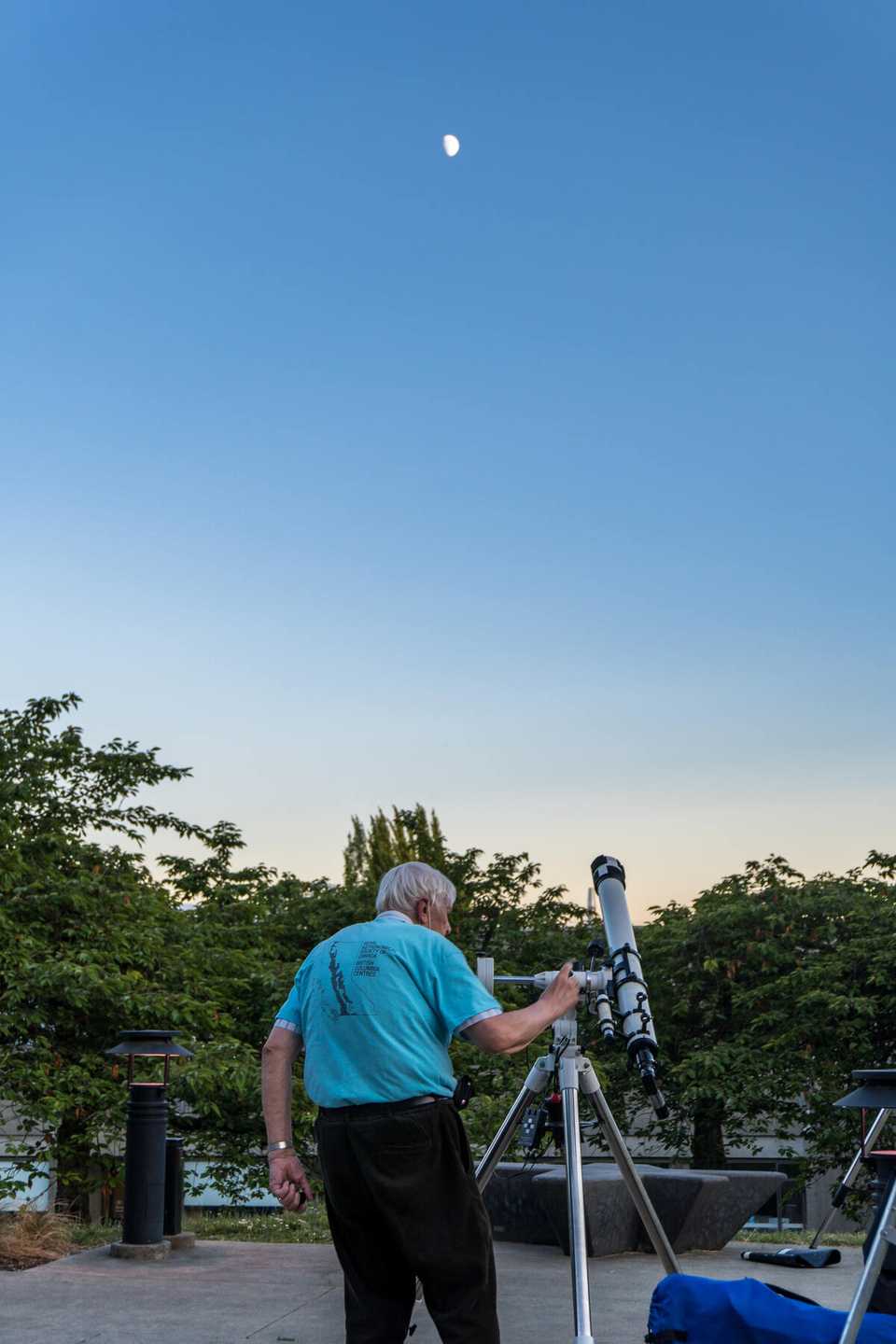
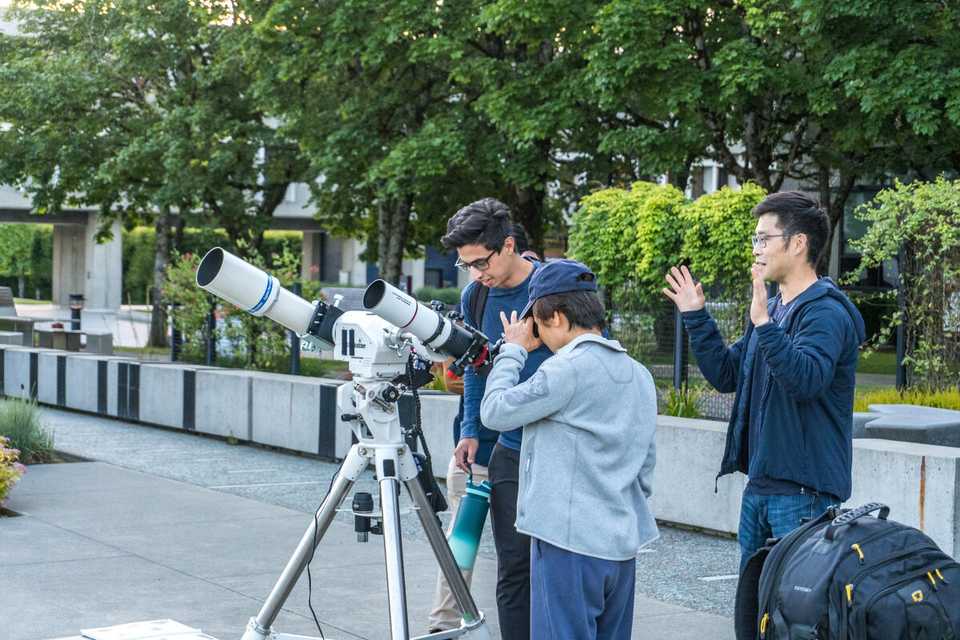
Anthony, another volunteer I had met at the previous Starry Nights, arrived with his 8” Dobsonian, and we talked about some of our recent nights out under dark skies. Martin, co-president of the SFU Astronomy Club, and his partner also arrived, and we viewed the moon for a while, going back and forth between Timbit and Takurrito. I’m impressed by Timbit’s performance, especially considering the price, providing clear and sharp views even at reasonably high (120x) magnifications.

Soon, many more people started to show up. I had my scopes pointed at the moon for most of the night, as the light pollution is bad enough at SFU without the near-full moon hanging off to the south, slowly starting to set. Maria joined the event as well, and she enjoyed her first view of the moon through Timbit! Sean and Kamryn from the UBC Astronomy Club arrived and went to check out the views through the observatory scope, as did Daniela and her friend.

Several people who viewed the moon through the observatory scope, having looked at the moon again through Takurrito, did a double take and asked me, rather confused, why it looked better through my scope. I found this rather amusing, but it’s not too surprising; a 4” Takahashi provides wonderful views of the planets and the moon, especially under less-than-ideal seeing conditions.
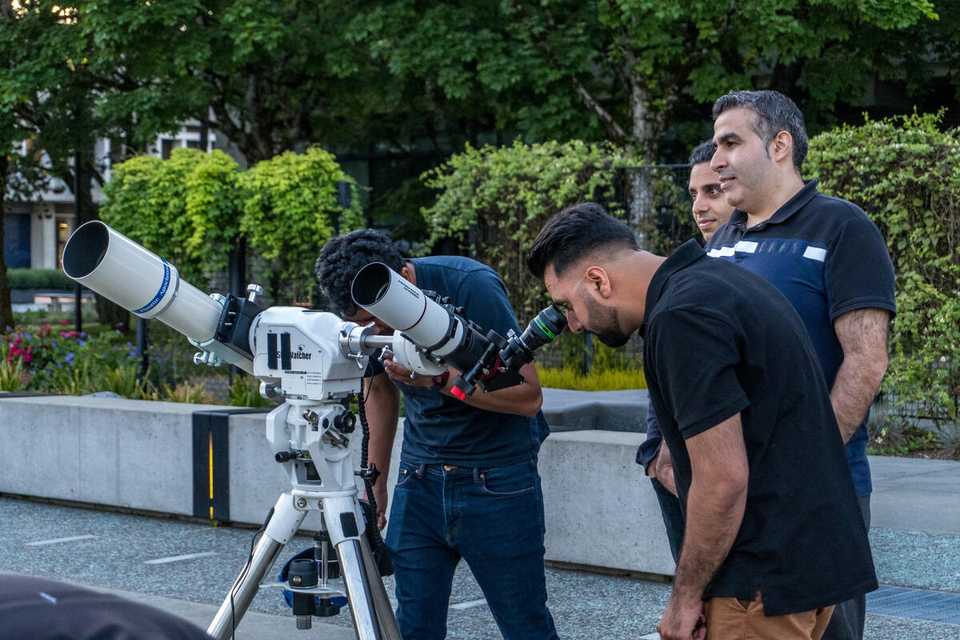
One lady, in particular, was so impressed by the view through Takurrito that she insisted that I show her something else through this scope. I somewhat reluctantly obliged, as I hadn’t bothered to align the mount, so I hastily aligned on Vega and Arcturus, then slewed the scope to M13. Of course, I know how to star hop, but go-to has spoiled me! I try not to show people deep-sky objects under such light-polluted skies, as I don’t want people to think that astronomy is about staring at featureless faint smudges (although that’s not entirely inaccurate), and as expected M13 looked faint and unimpressive, completely different from the view a few weeks ago through Felix’s 18” at Manning Park, where the dense stars looked impossibly bright, almost alive, truly one of the greatest sites in the northern hemisphere. A handful of people took a look before I slewed back to the Moon.
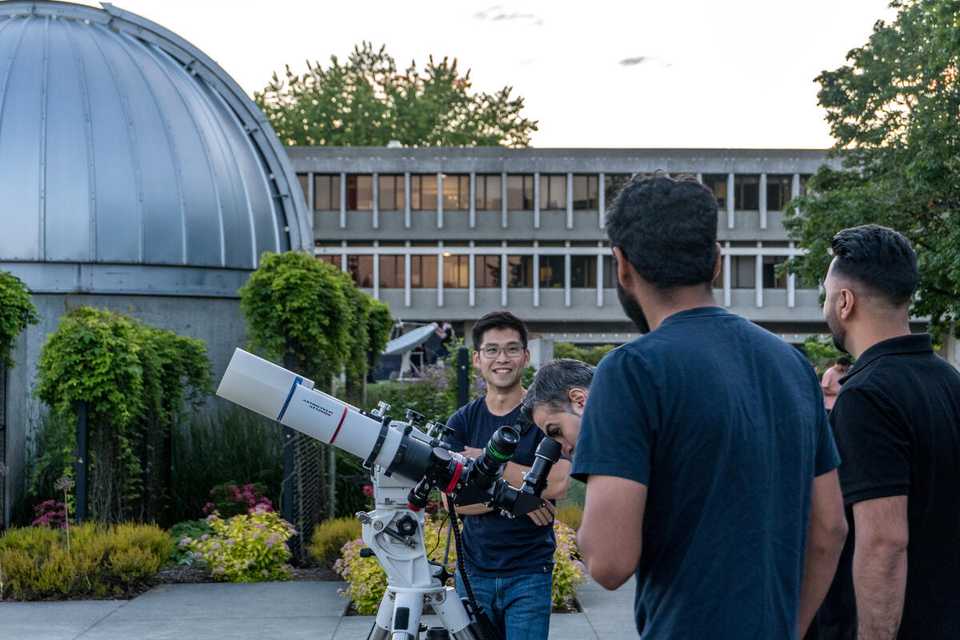
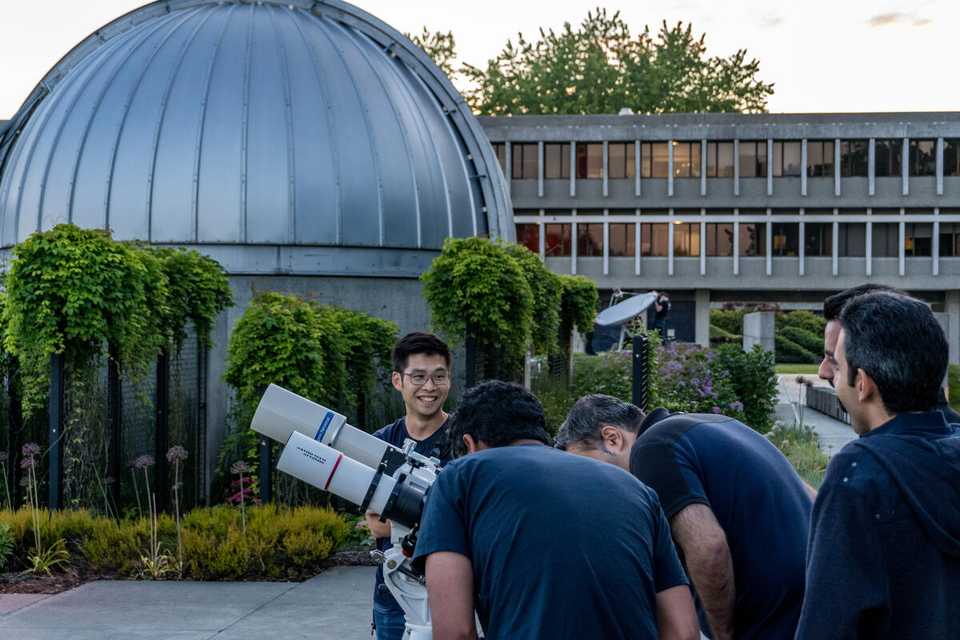
Around midnight, as we were preparing to pack up, someone pointed near the horizon through the trees at a bright yellow star, asking, “What’s that?” Saturn! Everyone rushed to point the telescopes at Saturn, the jewel of astronomy. Although low, the view was rather nice. What a great way to end a fun night of observing and sharing the night sky with the 150 people who visited my little two-scope “observatory”. People were excited about the dual-wield setup! It’s going to be a hit in the fall when the planets are up in the early evening sky - I cannot wait for more outreach events!
